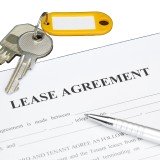What is an Assured Shorthold Tenancy?
You will have to be familiar with assured shorthold tenancy agreements if you're renting residential properties in the U.K. Learn the important laws and details of your tenancy right here.
Introduction to Assured Shorthold Tenancies
Assured shorthold leases (also known as a shorthold tenancy) were introduced in 1988 so that UK landlords could have the freedom to decide on how much rent they wanted to charge.
Compared to earlier regulated/protected tenancies, landlords are granted a lot more rights and freedom this time
An important update was made on 28 February 1997 regarding the creation of a shorthold lease: If you had a tenancy agreement that began on or after 28 February, it will become an assured shorthold tenancy agreement unless both landlord and tenant agrees to settle for an assured tenancy instead.
This important change in law has made shorthold leases the default type of rental agreement in the U.K.
Main Features of an Assured Shorthold Tenancy
Once your assured shorthold agreement is set up, your tenant has the right to stay on your rental property for at least 6 months.
If the rental period is less than 3 years, then it's not compulsory to have your lease agreement in writing (although we highly recommend it) - Click here for our free residential lease agreement.
Even if there is no written lease agreement, you will still have to provide your tenant with a written statement with the terms and conditions of the lease if they ask for it.
You can collect security deposit from your tenant that is equal to 2 month's rent or less. Although you're allowed to collect more than that, doing so may affect your landlord rights. The money that you collect as security deposit will have to be covered by a tenancy deposit scheme.
Landlords of assured shorthold tenancies are responsible for maintaining their properties in habitable condition according to the local health and safety standards.
Your tenant is responsible for paying the council tax, water bills and sewerage charges. For other property expenses, your rental agreement will dictate the who is responsible for the respective bills.
Ending an Assured Shorthold Tenancy Agreement
You can choose to end an assured shorthold lease anytime you want (as long as your tenant has stayed on the rental property for at least 6 months and your lease agreement is not of a fixed term nature).
You have to inform your tenants 2 months in advance by giving them a written notice to quit. This means if you want to end your tenancy after 6 months, the notice to quit has to be sent to your tenants by the 4th month or earlier.
If you want to remove a tenant during the first 6 months, you are only allowed to do so it he or she owes you rent or breaks the terms of your rental agreement.
Assured Shorthold Tenancy vs Assured Tenancy
Given their remarkably similar names, it's no surprise that many new landlords tend to mix up the two. So far we have only discussed about assured shorthold (also known as a shorthold tenancy). In the UK, there's another type of lease known as an assured tenancy.
The critical difference between a shorthold tenancy and an assured tenancy is that an assured tenancy is more restrictive to the landlord. You cannot end an assured tenancy by simply giving your tenant a written notice to quit in advance.
If your assured tenant refuses to leave, you cannot remove him from your rental property unless he refuses to pay his rent, harasses his neighbors or breaks the terms of your rental agreement.
For more details on this other tenancy type, Click here for our assured tenancy guide.


